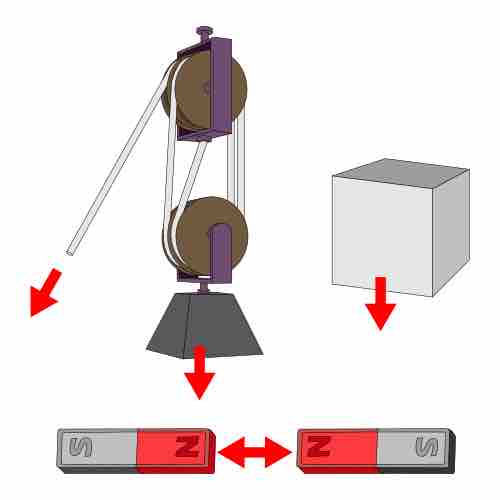Overview of Forces
In physics, a force is any influence that causes an object to undergo a certain change, either concerning its movement, direction, or geometrical construction . It is measured with the SI unit of Newtons. A force is that which can cause an object with mass to change its velocity, i.e., to accelerate, or which can cause a flexible object to deform. Force can also be described by intuitive concepts such as a push or pull. A force has both magnitude and direction, making it a vector quantity.
Qualities of Force
The original form of Newton's second law states that the net force acting upon an object is equal to the rate at which its momentum changes. This law is further given to mean that the acceleration of an object is directly proportional to the net force acting on the object, is in the direction of the net force, and is inversely proportional to the mass of the object.
As we mentioned, force is a vector quantity. A vector is a one dimensional array with elements of both magnitude and direction. In a force vector, the mass,
Related concepts to force include thrust, which increases the velocity of an object; drag, which decreases the velocity of an object; and torque which produces changes in rotational speed of an object. Forces which do not act uniformly on all parts of a body will also cause mechanical stresses, a technical term for influences which cause deformation of matter. While mechanical stress can remain embedded in a solid object, gradually deforming it, mechanical stress in a fluid determines changes in its pressure and volume.
Dynamics
Dynamics is the study of the forces that cause objects and systems to move. To understand this, we need a working definition of force. Our intuitive definition of force — that is, a push or a pull —is a good place to start. We know that a push or pull has both magnitude and direction (therefore, it is a vector quantity) and can vary considerably in each regard.
shows a few examples of the "push-pull" nature of force. The top left example is that of a pulley system. The force that someone would have to pull down on the cable would have to equal and exceed the force made by the mass the object and the effects of gravity on those object in order for the system to move up. The top right example shows that any object resting on a surface will still exert force on that surface. The bottom example is that of two magnets being attracted to each other due to magnetic force.

Examples of Force
Some situations in which forces are at play.